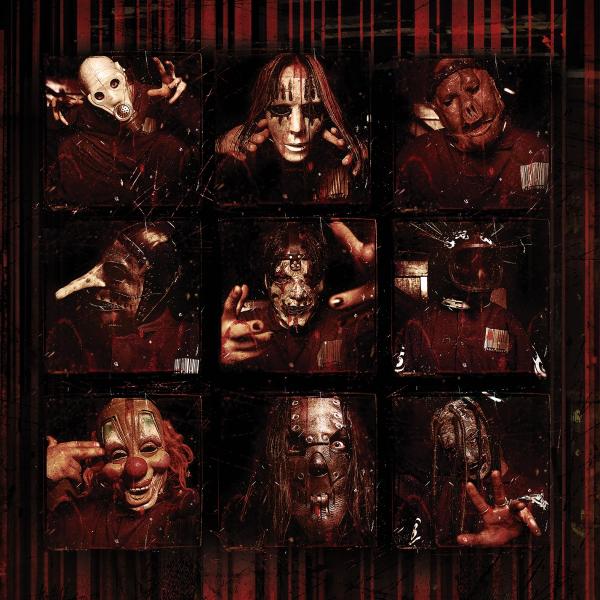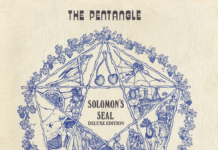It’s June 29th, 1999, and Roadrunner Records unveils something strange to the world: a nine-member band from Des Moines, Iowa, clad in jumpsuits and sporting disturbing masks. A band relatively unknown outside of the United States, and even there, they were small. After being passed over by Sony Music, they’d signed a multi-album deal with Roadrunner in 1998, cementing a partnership that would launch both the band and the label to massive mainstream success.
The world of metal was forever changed as we were introduced to Slipknot, and with them came their now-iconic self-titled debut album.
Now, let me clear one thing up before anyone descends into the comment section. Some would argue that technically, Slipknot was a second album, following Mate, Kill, Feed, Repeat, while others would argue it was little more than a demo – and I’d agree with the latter. MFKR was self-financed and self-released in small numbers, the band’s lineup was still in flux, and it didn’t include Corey Taylor or Jim Root. MFKR laid the groundwork for the band to slowly gain attention and ultimately secure a record deal, but it’s a vastly different listening experience from Slipknot, featuring a much more abstract sound that would predate the nu-metal stylings the band would later include.
As far as official label releases go, Slipknot is the debut. MFKR would go on to gain its own legendary status as a rare collectable among fans as they tried to track down copies all over the world once the band found global success. I myself spent a couple of years trying to get my hands on a CD copy that didn’t require a small loan to buy, in the days before streaming.
Slipknot was a groundbreaking record – not only were the band eye-catching, with elements of shock-rock and horror movie masks, their arrival on the scene and their relentless sound and chaotic live show turned the slow-burning popularity of the nu-metal scene into a raging inferno. They quickly became one of the leading acts within the polarising sub-genre. Just one year after release, the album earned platinum certification, a significant achievement as it was the first album released by Roadrunner Records to achieve this status in the United States.
Fast forward ten years, and Slipknot had become a household name and a global powerhouse. Their follow-up Iowa had taken them to a whole new level of popularity, and when the anniversary of the debut came around, fans were clamouring for a special edition re-issue. The tenth anniversary edition gained huge popularity for its inclusion of the bonus tracks ‘Purity’ and ‘Get This’.
If you know Slipknot lore, you’ll know all about the “lost track” ‘Purity’ and how it had to be pulled from the original release at the eleventh hour due to copyright issues. Corey Taylor was said to have been inspired by an online story about a kidnapped girl named Purity Knight who was buried alive in a box in the woods. The story was published on a website that presented fictional crime cases as real-life events without a disclaimer. The copyright dispute was further complicated by the fact that the song’s preceding interlude, ‘Frail Limb Nursery’, directly sampled audio from said website. To avoid having the entire album pulled from shelves, the band removed both tracks from subsequent pressings, replacing them with ‘Me Inside’. The tenth anniversary edition restored ‘Purity’ to its original place on the track list, but ‘Frail Limb Nursery’ has not seen the light of day since.
‘Get This’ was another selling point, as originally this track was only available on the Digipak or Japanese releases of the album – having it included on a worldwide re-issue filled a gap in many fans’ collections. The tenth anniversary edition was in many ways a victory lap, a confirmation of the band’s status as a major force in heavy music and a reminder of where they had started.
It’s now 2025, and the debut album’s status as a landmark is clear with its Twenty-Fifth Anniversary Edition reissue. This new edition offers you a deeper dive into the band’s chaotic early years, studio stories, unpredictable live shows, and their raw, visceral appeal. This version offers more bonus content than the tenth anniversary edition – most notably, there are pre-studio demos for tracks such as the massive single ‘Wait and Bleed’, a track that would be the gateway to the band for many, plus ‘Snap’ and ‘Prosthetics’.
What’s really on display here is the nascent stage of the songwriting process. I personally really like the demo version of ‘Wait and Bleed’, with its staggered vocal patterns and additional harmonies. It’s fun to take a journey into the band’s past and pick out small lyrical changes, different song structures, or simply bask in the rawer vocal delivery from Corey Taylor. If you thought the polished final product of Slipknot was intense, then you’ll get a real kick out of these demos. I know I sure did.
Alongside these demos are the Indigo Ranch sessions – unpolished mixes from the recording sessions with producer Ross Robinson that have been a talking point amongst die-hard “maggots” for years. These showcase the band’s initial sonic vision before the final mastering and polishing would take place. The sound is a snapshot of the time, maybe a little less refined, but still full of the band’s primal energy.
Then there are the test mixes from producers Jay Baumgardner and Ulrich Wild. These are particularly interesting as they represent alternative paths the album could have taken, showing the band exploring different approaches to their sound. The Jay Baumgardner mix of one of my all-time favourite Slipknot tracks, ‘Surfacing’, hits different with its frontloaded bass and drums and heavier feel – this mix really draws out those extra vocal and percussion parts that are less noticeable in the debut album mix. Jay’s take on ‘Only One’ and ‘No Life’ both get similar treatment, more bass and vocals on top that really offer a glimpse into what Slipknot could have sounded like with Baumgardner at the helm instead of Ross Robinson.
We also get an Ulrich Wild mix of ‘(sic)’ which sounds more like a demo – the opening roar is noticeably deeper before the familiar “Here comes the pain” sample. It’s a much more modern and polished version of the track when compared to Robinson’s raw takes. The bonus tracks are rounded out with a “Molten Injected” mix of ‘(Sic)’, an early version that has been floating around for years, and further highlights how Ross Robinson stripped down the band’s vision to its core to deliver the chaos that Slipknot is now known for. We also have the Terry Date mix of ‘Wait and Bleed’ and the “Hyper” and “Stamp You Out” versions of ‘Spit It Out’, which have also been passed around the fanbase for some time.
All in all, it feels like this anniversary edition is the complete package. The tenth edition teased fans with the knowledge that a treasure trove of unreleased, unheard, and maybe forgotten mixes was out there, somewhere, waiting to be rediscovered. If the tenth was a tribute to a finished product, then the twenty-fifth is a chronicle of the creative process. With this re-issue, we finally have all the pieces of the puzzle, and we can fully dissect and relive the early days of a band that has gone on to dominate the heavy music world. All these years later, there are still new stories to tell and new layers to uncover about this foundational album. Maybe we can hear some of those stories if the mythical lost album of rarities and B-Sides, Look Outside Your Window, ever releases. Here’s hoping, and until then, give this one a spin.


















